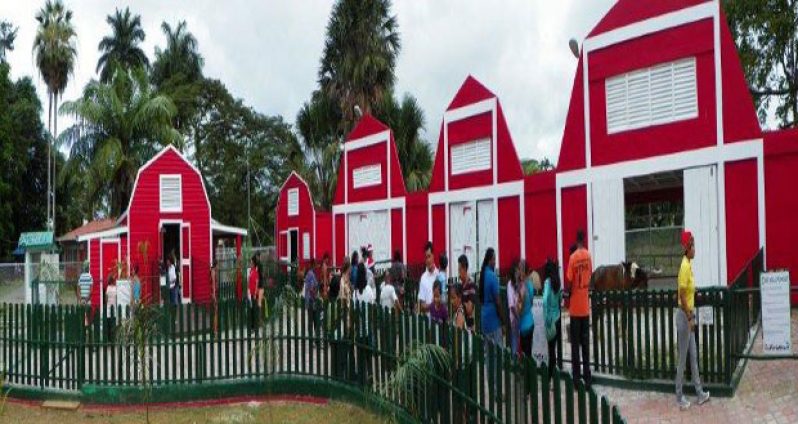THE petting zoo at the Zoological Park (zoo) under the Three-Parks Initiative which is geared at enhancing biodiversity in urban areas for the protection of Guyana’s “green spaces,” has received a positive response from the public since its official opening last month.Protected Areas Commission officer Ms. Annalise Bayney, who supervises this initiative, told the Guyana Chronicle during a telephone interview yesterday that the public is very supportive, since the zoo has been receiving huge turn-outs since its opening.
Bayney then underscored that the other projects, such as: the Coastal Wetlands, which will cater for the Black Caiman; the Savannah and the Mountain Highlands, which would accommodate the jaguars; the Rainforest, which will be home to the Harpy Eagle and other bird species; and World Treasures, which will hold lions and tigers, are yet to be funded by either the Government of Guyana or private entities.

THE INITIATIVE
This initiative, valued at $35M in total, has allowed visitors free access to the facility and is expected to contribute to its own upkeep through rental for children’s birthday parties, as well as from reduced costs for food to be paid for by visitors, making purchases to feed the animals.
Moreover, this petting zoo currently features horses, cows, donkeys, goats, chicken, turtles, ducks and rabbits. Thus far, the maintenance of these animals has been less expensive when compared to the other animals in the larger zoo. The current primary objective of the zoo however, is to implement international standards to promote animal welfare.
ZOO-TO-ZOO EXCHANGE
Whilst declaring the petting zoo open last month, the Minister of Natural Resources and the Environment, Robert Persaud highlighted that the Ministry has concluded a zoo to zoo exchange programme “which will see us having new animals and species which can’t be found in Guyana or South America; emphasising that these animals are expected to come from as far as Africa and Asia.”
He further stated that the animal population at the zoo will increase in the coming months because the agreement in the zoo to zoo exchange programme was already signed. Following that, he said this is another step towards enhancing the Zoological Park, and such efforts are expected to continue as long as they have the support of citizens.
THREE-PARKS INITIATIVE
The zoo’s 45 species of animals are housed in enclosures that are not in line with current best practices and understanding in zoo husbandry, and are becoming increasingly difficult and expensive to maintain. Therefore, the Ministry of Natural Resources and the Environment (MNRE) and the Protected Areas Commission launched the Three-Parks initiative to modernise the zoo.
Meanwhile, the zoo has established a Master Plan to augment its prime facilities and regenerate as well as develop road and rail networks in all three parks: The National Park, the Zoological Park and the Joe Vieira Park. Rehabilitation of the zoo would enable visitors to gain greater knowledge of animal species in habitats that are representative of Guyana’s eco-systems. Moreover, the zoo seeks to create new exhibit spaces that are huge enough to accommodate the animals and give them room to roam freely, as in their natural habitats.
According to the Master Plan, five projects are to be completed which were mentioned earlier. As such, each habitat zone will provide information on protected areas associated with that particular eco-system. For instance, there will be a Shell Beach information display in the Coastal Wetlands zone, and a Kanuku Mountains display in the Mountain Highlands zone. Covered climate-controlled structures will provide visitors’ comfort stations, where habitat views, small animal exhibits, and interpretive information will be afforded in relative protection from the elements.
The storyline will be conveyed to visitors through conventional graphics, artifacts, interactive elements, live animals, architecture, and landscape simulation. Visitors would be immersed in zones which are created to reinforce and illustrate the interpretive themes of animal interactions (predator/prey), symbiotic plant and animal associations, indigenous peoples, and modern human relationships with the natural world.
The Zoological Park came into existence in 1952, and affords both locals and tourists the chance to experience a diverse animal collection in a safe and accessible environment.
It occupies approximately four acres of land, and serves as a shelter for abandoned and abused animals. It is beneficial for visitors, since it provides a spectrum for educational and recreational facilities that serve to highlight information and encourage admiration for wildlife in Guyana. Given that much of the zoo’s infrastructure was designed in the 1950s, it has not since reflected present international standards, hence the Three-Parks Initiative.




.jpg)










